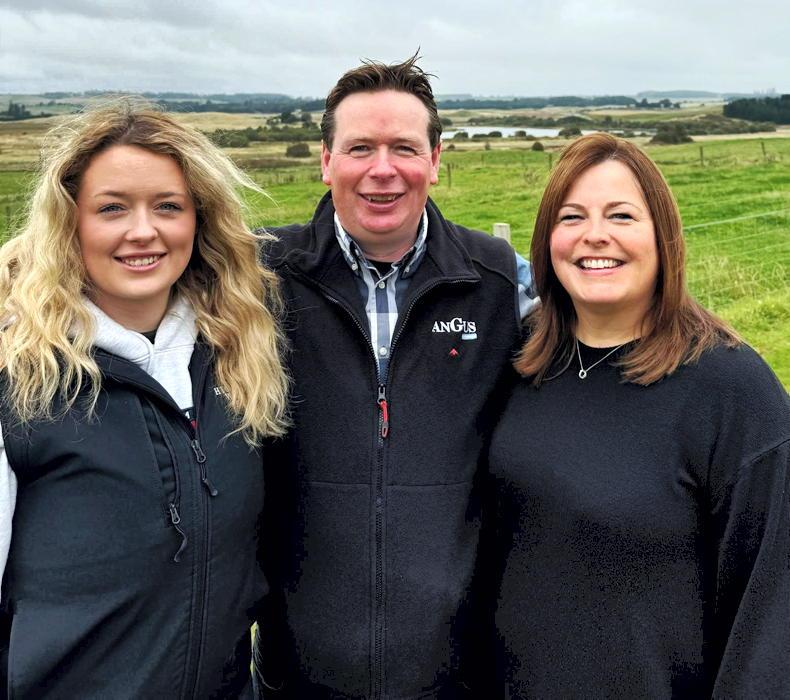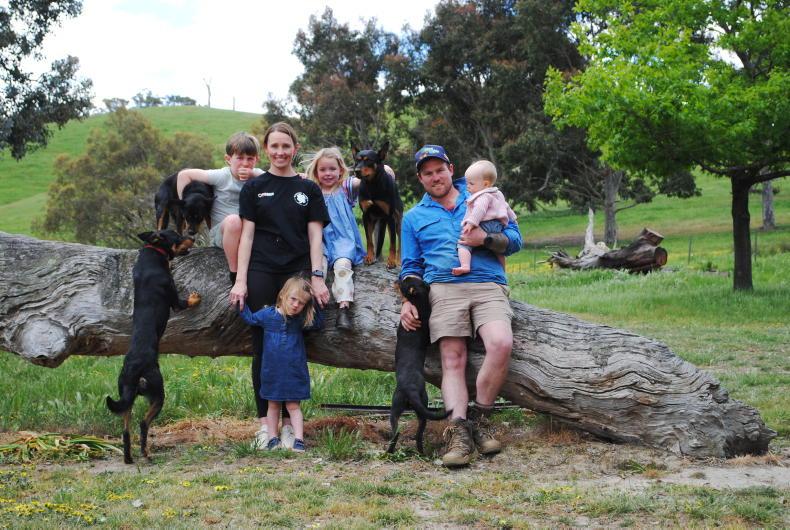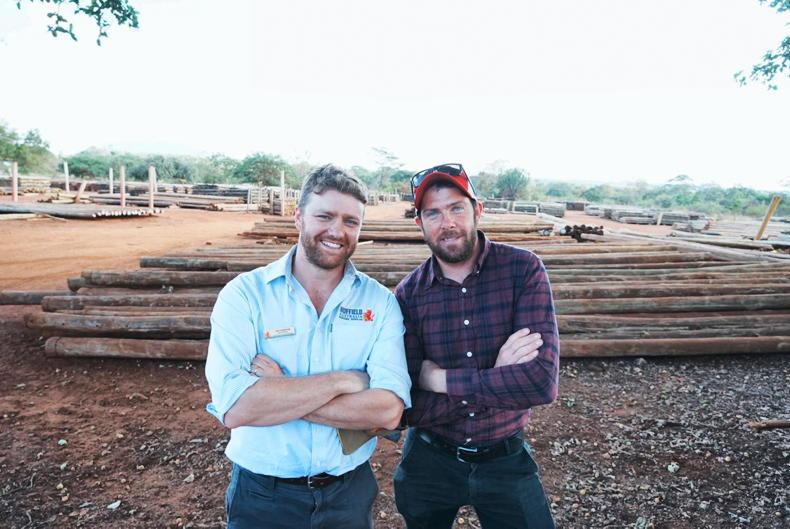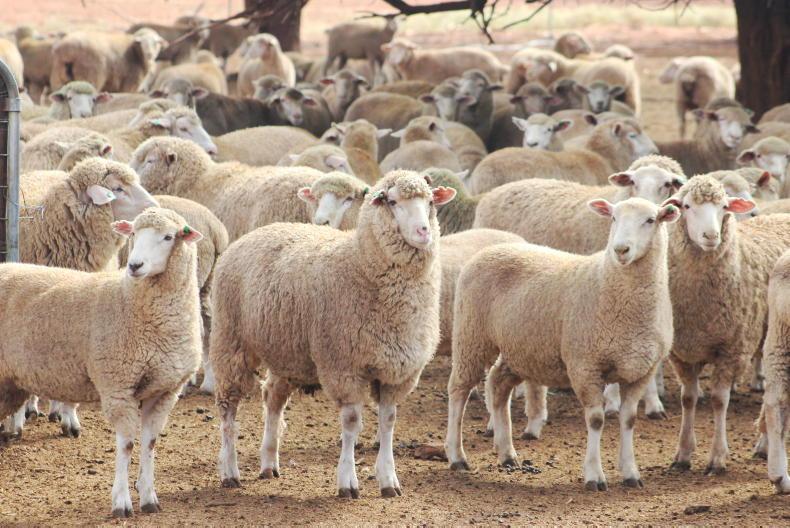Angus cattle are king across much of Australia and the trend is not set to change any time soon.
So much so that farmers often joke that they get a discount for any animal that has a bit of colour, with a noticeable premium paid on black cattle at a mart, ahead of all others.
Arguably, it’s the total opposite to the demand seen for a roan heifer in Ireland.
For much of Victoria, south Australia, New South Wales and Tasmania, which are Australian states with smaller, greener farms, upwards of 70% of the cattle in a mart could be sired by Angus bulls.
It is only in the hotter states of Queensland, western Australia and the Northern Territory where the Brahman starts to take over.
The Angus’ domination started in the 1990s, with the Australian breed society mastering its marketing to capitalise.
All of it was at the downfall of the Hereford – the breed which many say settled Down Under – and the white-faced cattle have struggled to compete ever since.
The preference for black cattle is so strong that other breeds, including the Simmental, Limousin and Speckle Park, now have pedigree black versions.
“Black cattle on green grass, that’s the dream,” said Victorian farmer Andrew McLean.
The beef farmer has been running Angus stock for 30 years and he’d never have another beast in his yards again.

Angus cattle on farm in Australia.\ Barry Murphy
Data
Most Australian beef farmers have total faith in breeding data and figures, equivalent to the ICBF star ratings, and this is where the Angus is set apart.
McLean said the breed is “well supported with genetic depth so what you see is what you’re going to get”.
“There’s a lot of data to support everything we do in terms of 200, 400, 600 day growth, fat cover and marbling,” he said. “It’s all there.”
He added that with the Angus, a farmer has a range of marketing options, whether it be for feedlots or grass finish.
Angus bulls are differentiated around these preferences, almost as if there were several breeds within the one, and some farmers have such trust in the data that they could buy an Angus bull totally blind, without ever seeing it in person.
Angus Australia engagement manager Jake Phillips said pedigree Angus breeders have backed the right horse.
There were 240 registered Angus bull sales across Australia in 2024, with 15,000 registered bulls going to auction.
“That’s higher than it’s ever been before,” said Philips.
“We’re proud of our seedstock breeders who’ve been able to offer more bulls and clear more bulls year on year over a prolonged period of time.”
He said Angus farmers are “some of the best cattle breeders in Australia and they happen to breed Angus cattle” and that the society’s marketing is just a “drop in the ocean” compared to the promotion by each individual ‘stud’.
The society is soon set to release an Angus carbon emissions efficiency index, solely for the breed.
Unlike data owned and shared through any Teagasc trials, the self-led research could be seen as biased.
However, Australian farmers don’t seem to think so.
“Plain and simple, the Angus grows quickly and it is efficient in the way it converts grass into meat,” said McLean.
He said the breed was more environmentally sustainable than all others, a view shared by fellow Victorian suckler farmer Tim Wilson.
Four decades of Angus breeding drove efficiencies on his 450-cow beef farm.

Angus beef farmer Andrew McLean, Hansonville, Victoria, Australia. \ Barry Murphy
Efficiency
Wilson said the Angus’ genetic improvements have set him up for the future, where carbon requirements will be a key factor in beef production.
“Having the most efficient cattle is going to be the way to do it,” he said.
“They’re long-term prospects that you can’t change overnight so you’ve got to start early and really work on it.”
He said ultimately, the Angus breed was a more climate friendly, medium-framed animal that could be finished off grass.
“A small amount of inputs go into them to get that weight gain on to them,” he said.
Like most Australian beef herds, Wilson’s breeding was focused on having “fit for purpose cattle”.
He was disappointed this year that he had to assist nine cows from the 450 at calving and these would be culled from the commercially-run pedigree herd once weaned.
There was also no room for baggy elders and any cow that couldn’t have her calf up and sucked herself would also not be kept.
“We’re very commercially orientated and looking to be just as efficient as possible,” he said.
“We certainly look for low birth weight and good shouldered bulls.
“All the cows are kept from our breeding so they should come from low birth-weight bulls as well.”
Wilson said the Angus cow itself was made for beef farming and he had no time for a bigger or more muscled heifer.
“We don’t want things that are too big [but] something that can carry its weight through winter easily and not require a power of feed just to maintain its weight,” he said. The farm, located in very green and Ireland-like Gippsland, is made up of almost 1,000ac and all calves are brought through to finish, with about 1,300 cattle in the system at any one time.
Finishing is achieved solely off grass with meal only introduced in a very dry year. “With the rainfall and grass here, we can fatten cattle in the middle of winter as well as all summer,” he said. Both autumn and spring-born calves are weaned at 10 months of age, giving cows a two-month break before calving down again.
“All stock are finished between 20 and 24 months and supplied directly to Coles, an Australian supermarket giant.
“This year, I’ve actually been getting the first lot, the best of them, off at 18 months,” Wilson said.
Bullocks are finished between 580kg and 620kg with heifers ranging 480-580kg.
“It’s all off grass,” he insisted.
The beef farmer was adamant that easy calving traits don’t compromise a breed’s finishing ability or carcase quality.
He took a scientific approach on carcase data, with several traits selected for including eye muscle area and intra-muscular fat.
“It takes a long time to improve those things. One of the major factors about the future production of this farm is improving the kilos per hectare that we can send off,” he maintained.
Wilson was securing a slaughter beef price of close on $7.10 or €4.28/kg. At a 300kg killout, his bullocks would be making $2,130 or €1,284, over the hooks.
“They do need to be up in those levels of $2,000-2,500 a head at the end of the game, to really be getting any sort of return on your investment,” he said.
The premium paid for Angus cattle in Australia was again evident at the country’s southern weanling sales last month where buyers forked out almost €200 more to secure the best Angus bullocks and heifers, compared to Hereford or EU-bred stock.

Angus cattle are king in Australia. \ Barry Murphy

Some farmers have such trust in the data that they could buy an Angus bull totally blind, without ever seeing it in person.\ Barry Murphy

Angus beef farmer Tim Wilson, Labertouche, Victoria, Australia. \ Barry Murphy
Angus cattle are king across much of Australia and the trend is not set to change any time soon.
So much so that farmers often joke that they get a discount for any animal that has a bit of colour, with a noticeable premium paid on black cattle at a mart, ahead of all others.
Arguably, it’s the total opposite to the demand seen for a roan heifer in Ireland.
For much of Victoria, south Australia, New South Wales and Tasmania, which are Australian states with smaller, greener farms, upwards of 70% of the cattle in a mart could be sired by Angus bulls.
It is only in the hotter states of Queensland, western Australia and the Northern Territory where the Brahman starts to take over.
The Angus’ domination started in the 1990s, with the Australian breed society mastering its marketing to capitalise.
All of it was at the downfall of the Hereford – the breed which many say settled Down Under – and the white-faced cattle have struggled to compete ever since.
The preference for black cattle is so strong that other breeds, including the Simmental, Limousin and Speckle Park, now have pedigree black versions.
“Black cattle on green grass, that’s the dream,” said Victorian farmer Andrew McLean.
The beef farmer has been running Angus stock for 30 years and he’d never have another beast in his yards again.

Angus cattle on farm in Australia.\ Barry Murphy
Data
Most Australian beef farmers have total faith in breeding data and figures, equivalent to the ICBF star ratings, and this is where the Angus is set apart.
McLean said the breed is “well supported with genetic depth so what you see is what you’re going to get”.
“There’s a lot of data to support everything we do in terms of 200, 400, 600 day growth, fat cover and marbling,” he said. “It’s all there.”
He added that with the Angus, a farmer has a range of marketing options, whether it be for feedlots or grass finish.
Angus bulls are differentiated around these preferences, almost as if there were several breeds within the one, and some farmers have such trust in the data that they could buy an Angus bull totally blind, without ever seeing it in person.
Angus Australia engagement manager Jake Phillips said pedigree Angus breeders have backed the right horse.
There were 240 registered Angus bull sales across Australia in 2024, with 15,000 registered bulls going to auction.
“That’s higher than it’s ever been before,” said Philips.
“We’re proud of our seedstock breeders who’ve been able to offer more bulls and clear more bulls year on year over a prolonged period of time.”
He said Angus farmers are “some of the best cattle breeders in Australia and they happen to breed Angus cattle” and that the society’s marketing is just a “drop in the ocean” compared to the promotion by each individual ‘stud’.
The society is soon set to release an Angus carbon emissions efficiency index, solely for the breed.
Unlike data owned and shared through any Teagasc trials, the self-led research could be seen as biased.
However, Australian farmers don’t seem to think so.
“Plain and simple, the Angus grows quickly and it is efficient in the way it converts grass into meat,” said McLean.
He said the breed was more environmentally sustainable than all others, a view shared by fellow Victorian suckler farmer Tim Wilson.
Four decades of Angus breeding drove efficiencies on his 450-cow beef farm.

Angus beef farmer Andrew McLean, Hansonville, Victoria, Australia. \ Barry Murphy
Efficiency
Wilson said the Angus’ genetic improvements have set him up for the future, where carbon requirements will be a key factor in beef production.
“Having the most efficient cattle is going to be the way to do it,” he said.
“They’re long-term prospects that you can’t change overnight so you’ve got to start early and really work on it.”
He said ultimately, the Angus breed was a more climate friendly, medium-framed animal that could be finished off grass.
“A small amount of inputs go into them to get that weight gain on to them,” he said.
Like most Australian beef herds, Wilson’s breeding was focused on having “fit for purpose cattle”.
He was disappointed this year that he had to assist nine cows from the 450 at calving and these would be culled from the commercially-run pedigree herd once weaned.
There was also no room for baggy elders and any cow that couldn’t have her calf up and sucked herself would also not be kept.
“We’re very commercially orientated and looking to be just as efficient as possible,” he said.
“We certainly look for low birth weight and good shouldered bulls.
“All the cows are kept from our breeding so they should come from low birth-weight bulls as well.”
Wilson said the Angus cow itself was made for beef farming and he had no time for a bigger or more muscled heifer.
“We don’t want things that are too big [but] something that can carry its weight through winter easily and not require a power of feed just to maintain its weight,” he said. The farm, located in very green and Ireland-like Gippsland, is made up of almost 1,000ac and all calves are brought through to finish, with about 1,300 cattle in the system at any one time.
Finishing is achieved solely off grass with meal only introduced in a very dry year. “With the rainfall and grass here, we can fatten cattle in the middle of winter as well as all summer,” he said. Both autumn and spring-born calves are weaned at 10 months of age, giving cows a two-month break before calving down again.
“All stock are finished between 20 and 24 months and supplied directly to Coles, an Australian supermarket giant.
“This year, I’ve actually been getting the first lot, the best of them, off at 18 months,” Wilson said.
Bullocks are finished between 580kg and 620kg with heifers ranging 480-580kg.
“It’s all off grass,” he insisted.
The beef farmer was adamant that easy calving traits don’t compromise a breed’s finishing ability or carcase quality.
He took a scientific approach on carcase data, with several traits selected for including eye muscle area and intra-muscular fat.
“It takes a long time to improve those things. One of the major factors about the future production of this farm is improving the kilos per hectare that we can send off,” he maintained.
Wilson was securing a slaughter beef price of close on $7.10 or €4.28/kg. At a 300kg killout, his bullocks would be making $2,130 or €1,284, over the hooks.
“They do need to be up in those levels of $2,000-2,500 a head at the end of the game, to really be getting any sort of return on your investment,” he said.
The premium paid for Angus cattle in Australia was again evident at the country’s southern weanling sales last month where buyers forked out almost €200 more to secure the best Angus bullocks and heifers, compared to Hereford or EU-bred stock.

Angus cattle are king in Australia. \ Barry Murphy

Some farmers have such trust in the data that they could buy an Angus bull totally blind, without ever seeing it in person.\ Barry Murphy

Angus beef farmer Tim Wilson, Labertouche, Victoria, Australia. \ Barry Murphy














SHARING OPTIONS